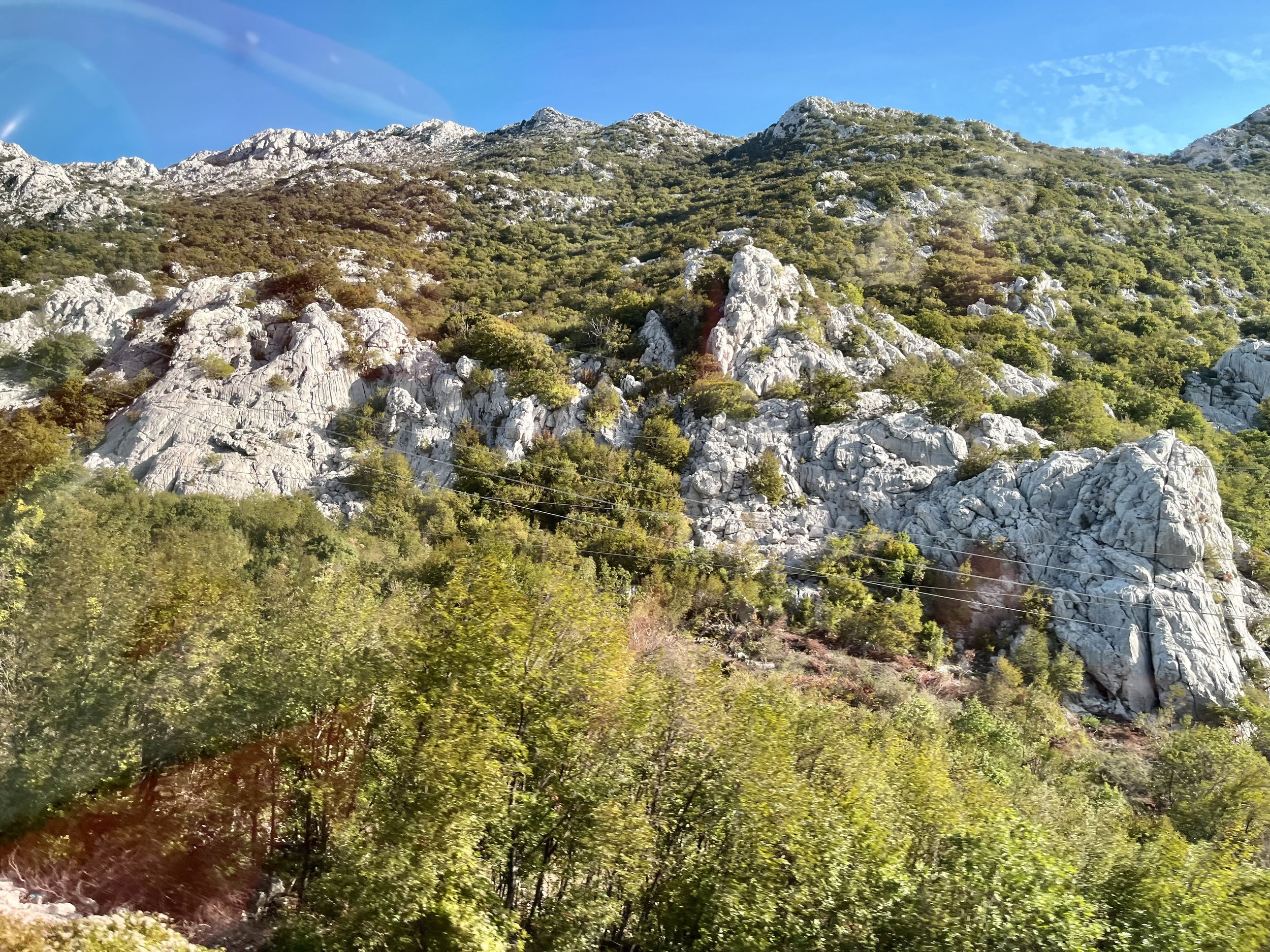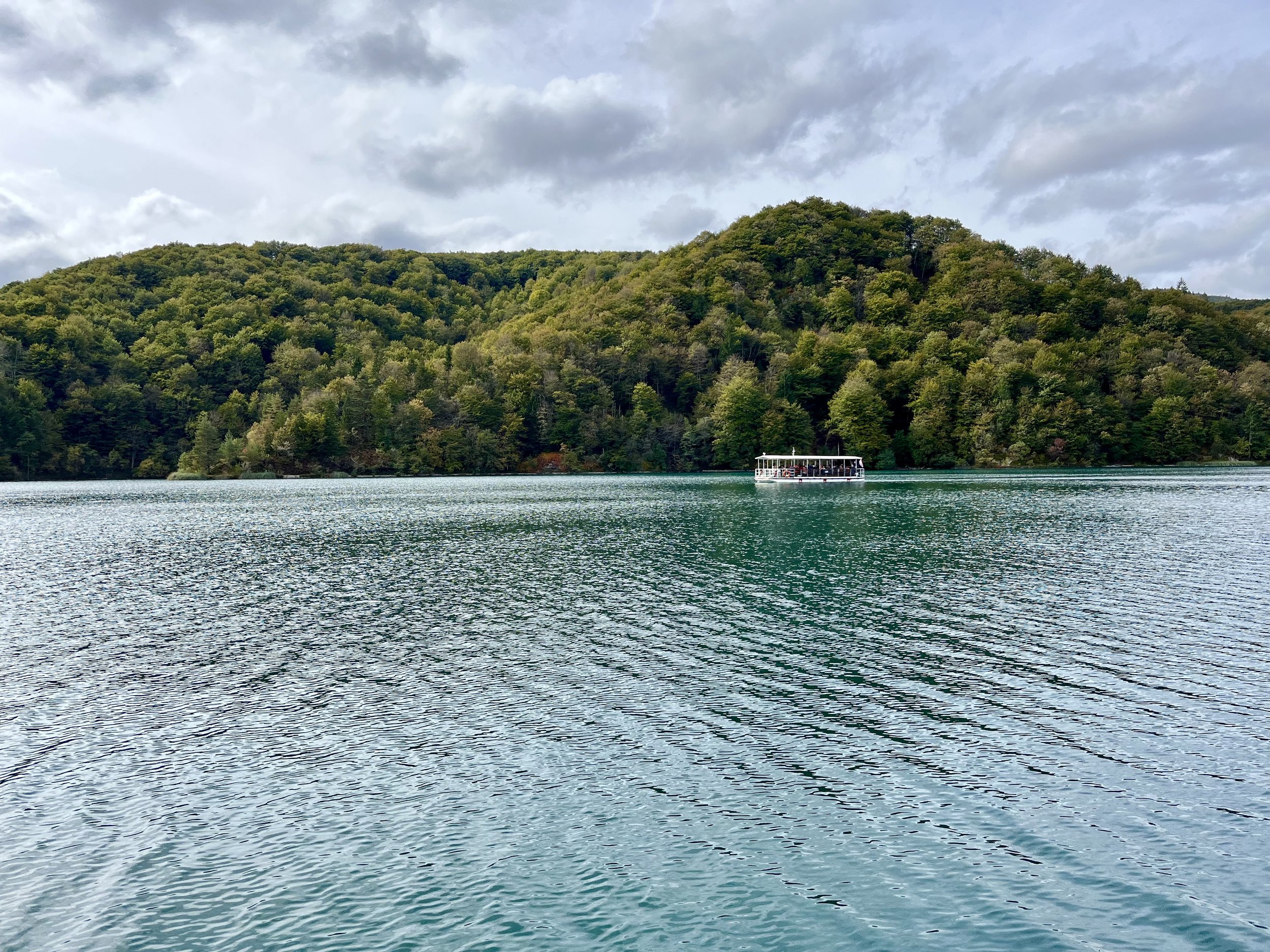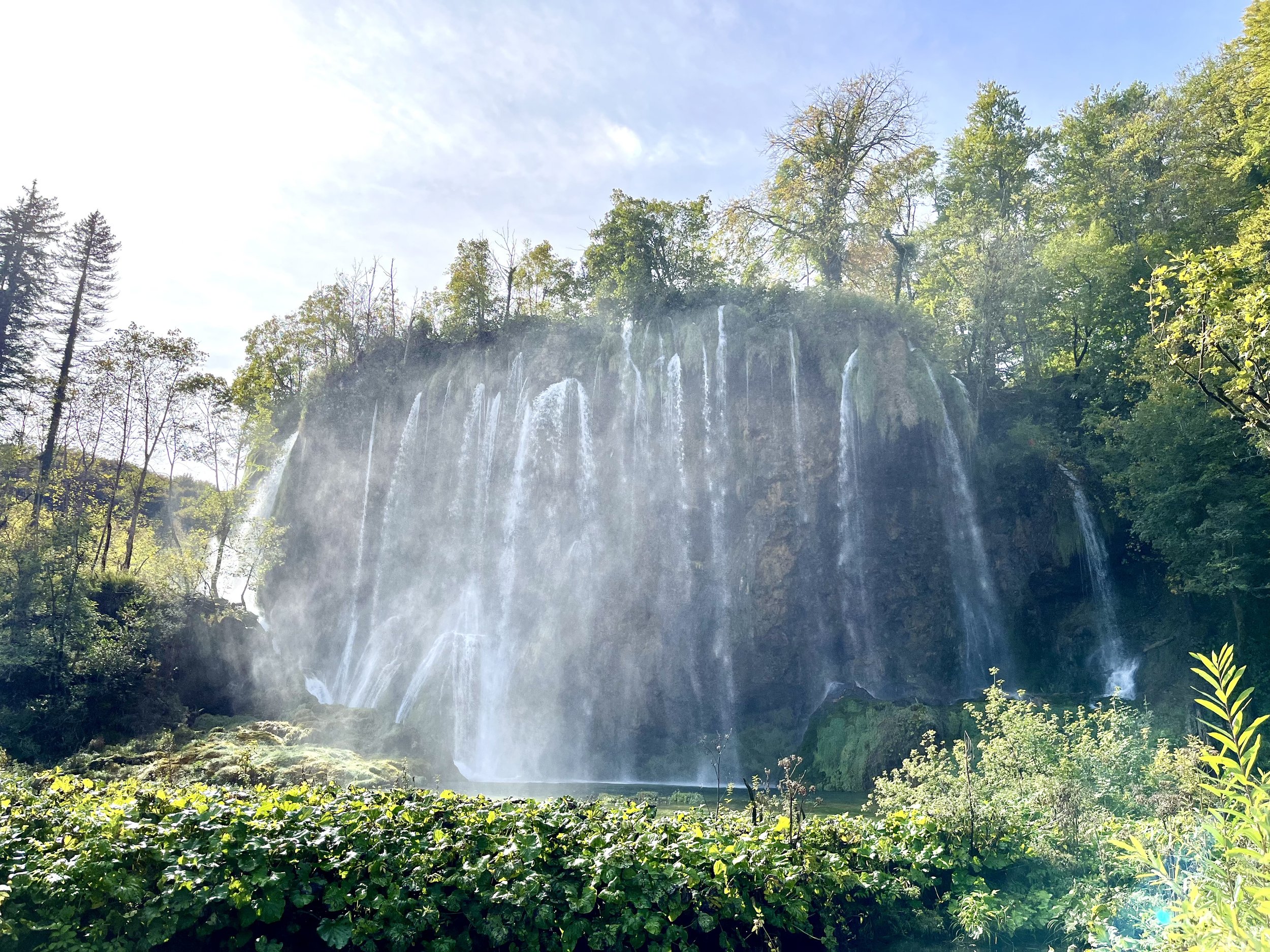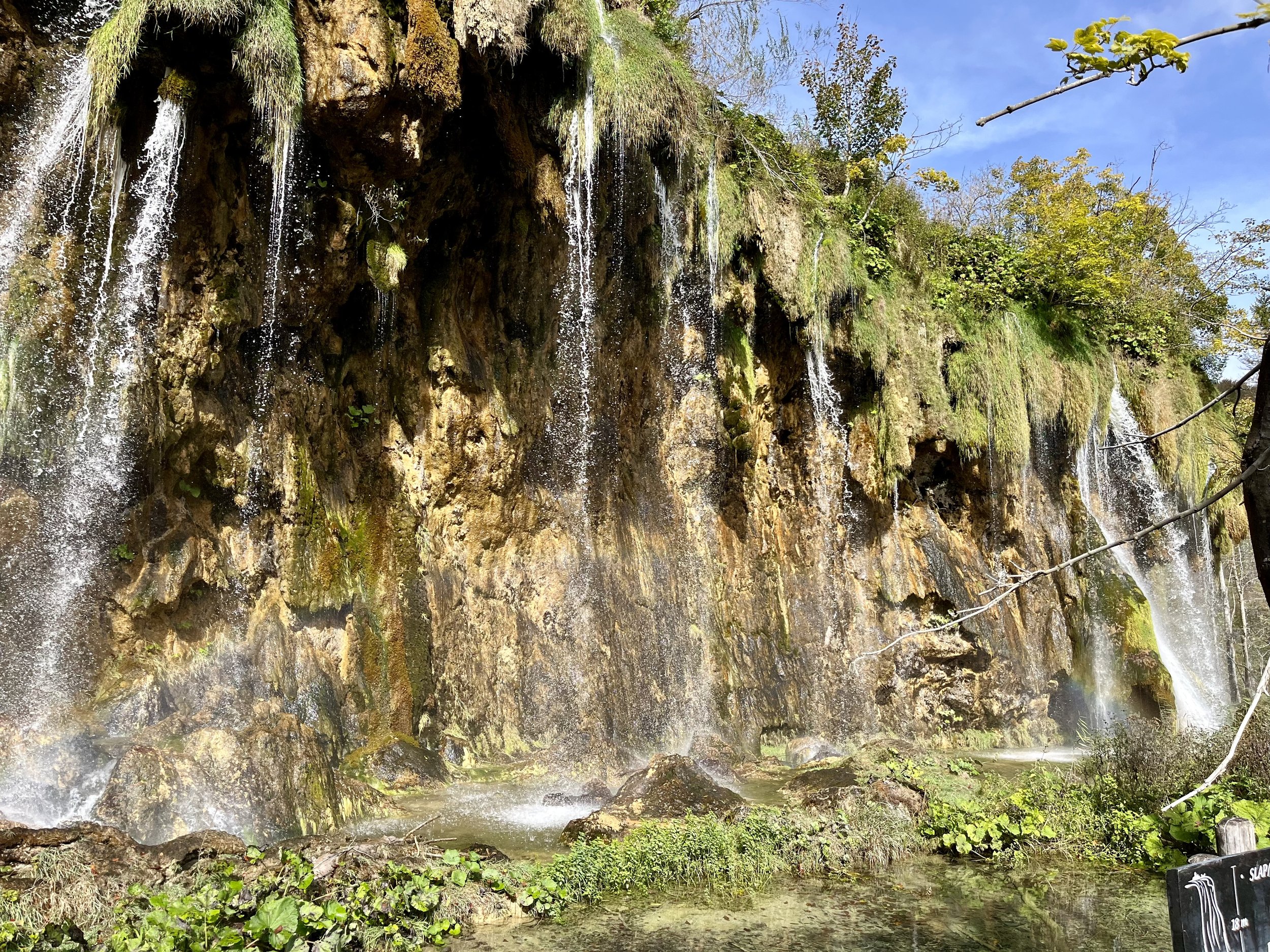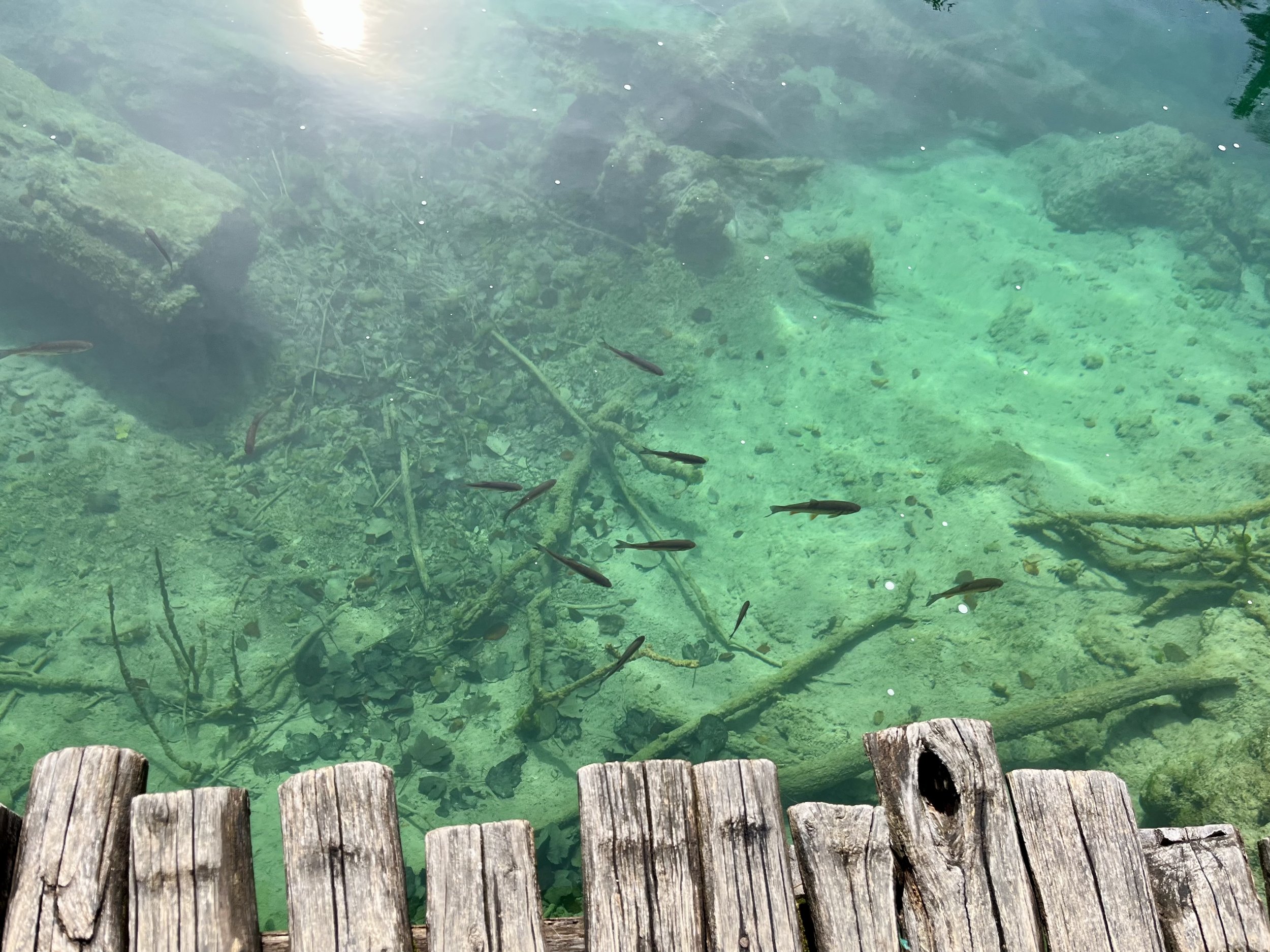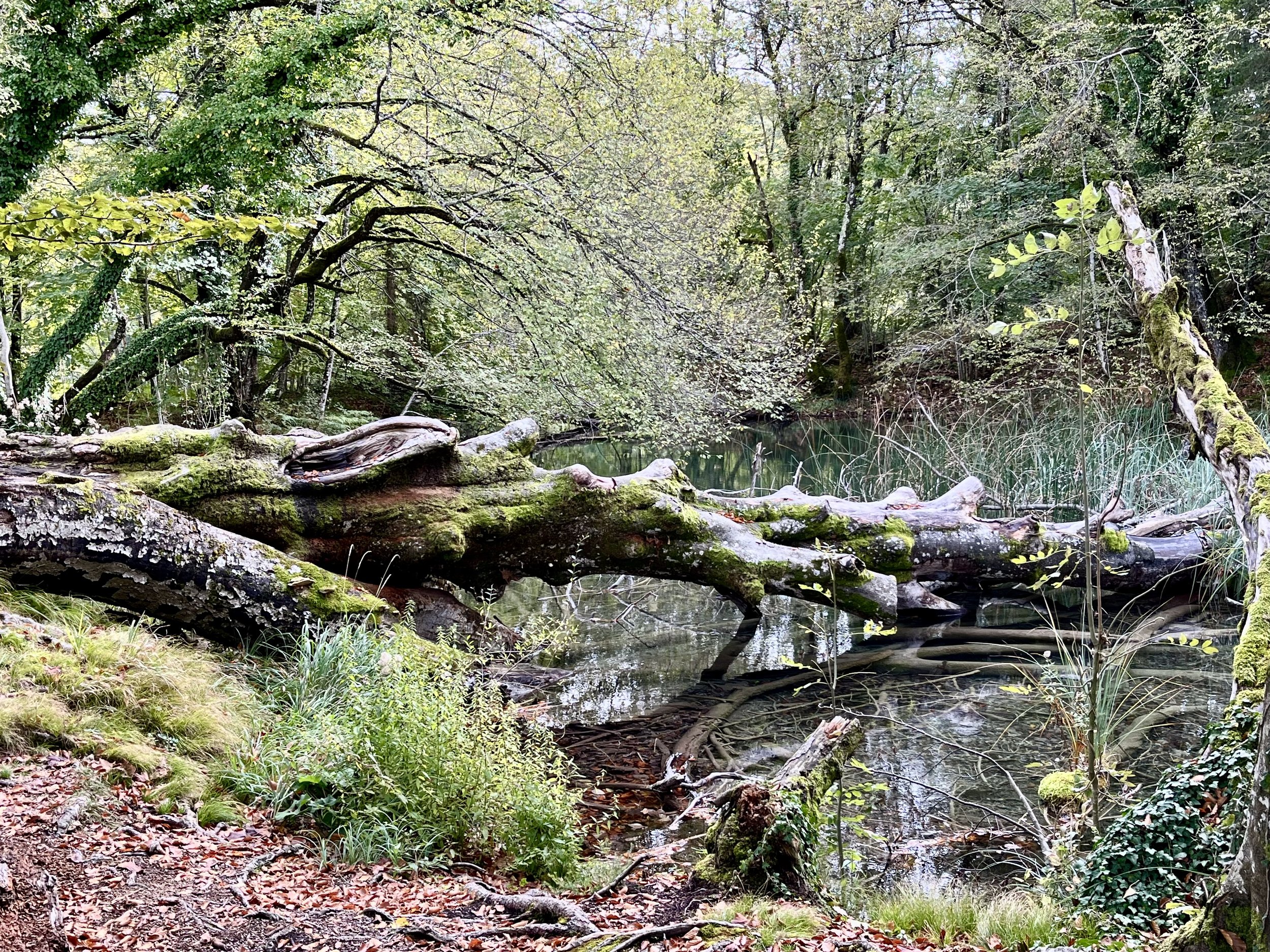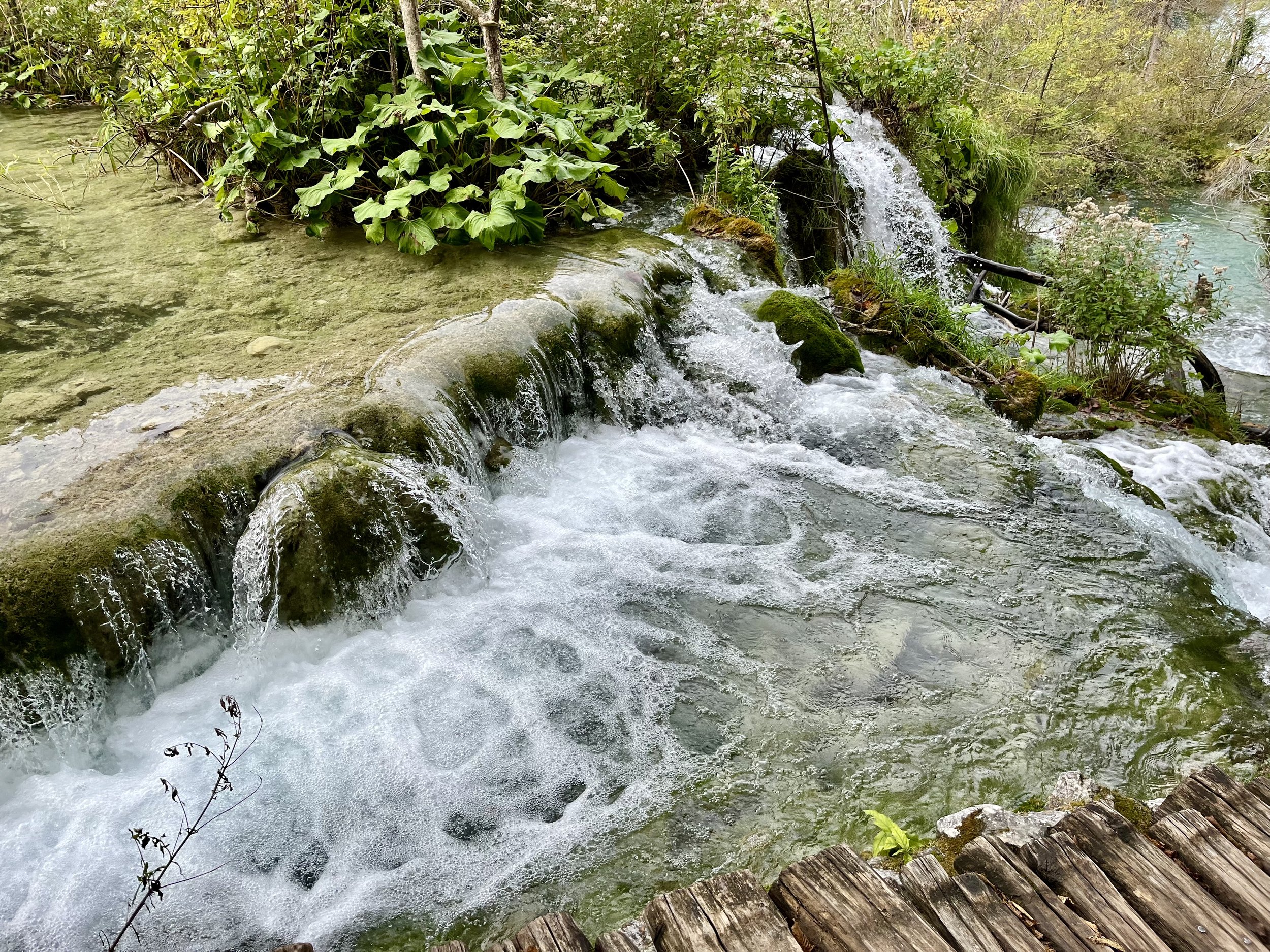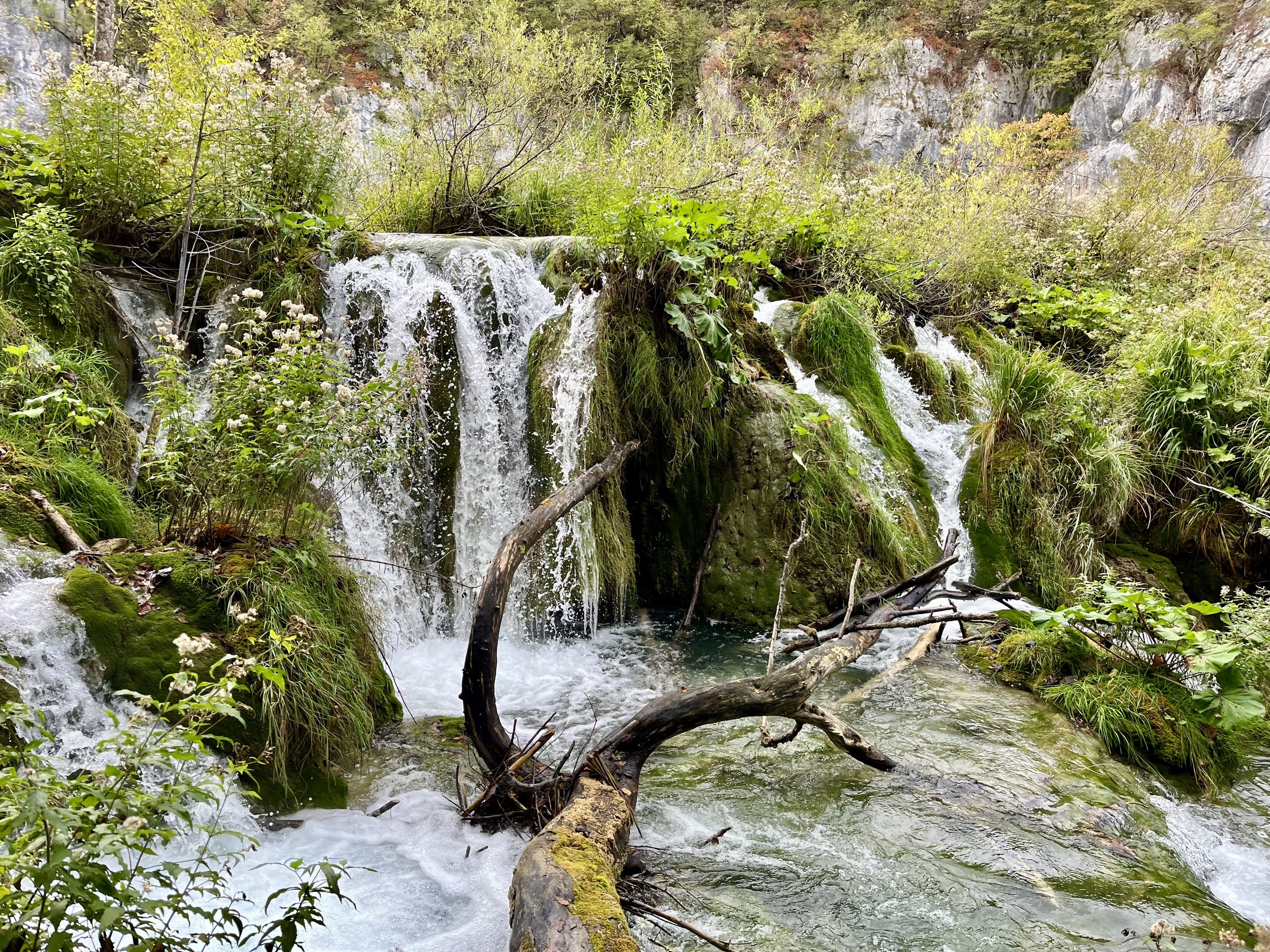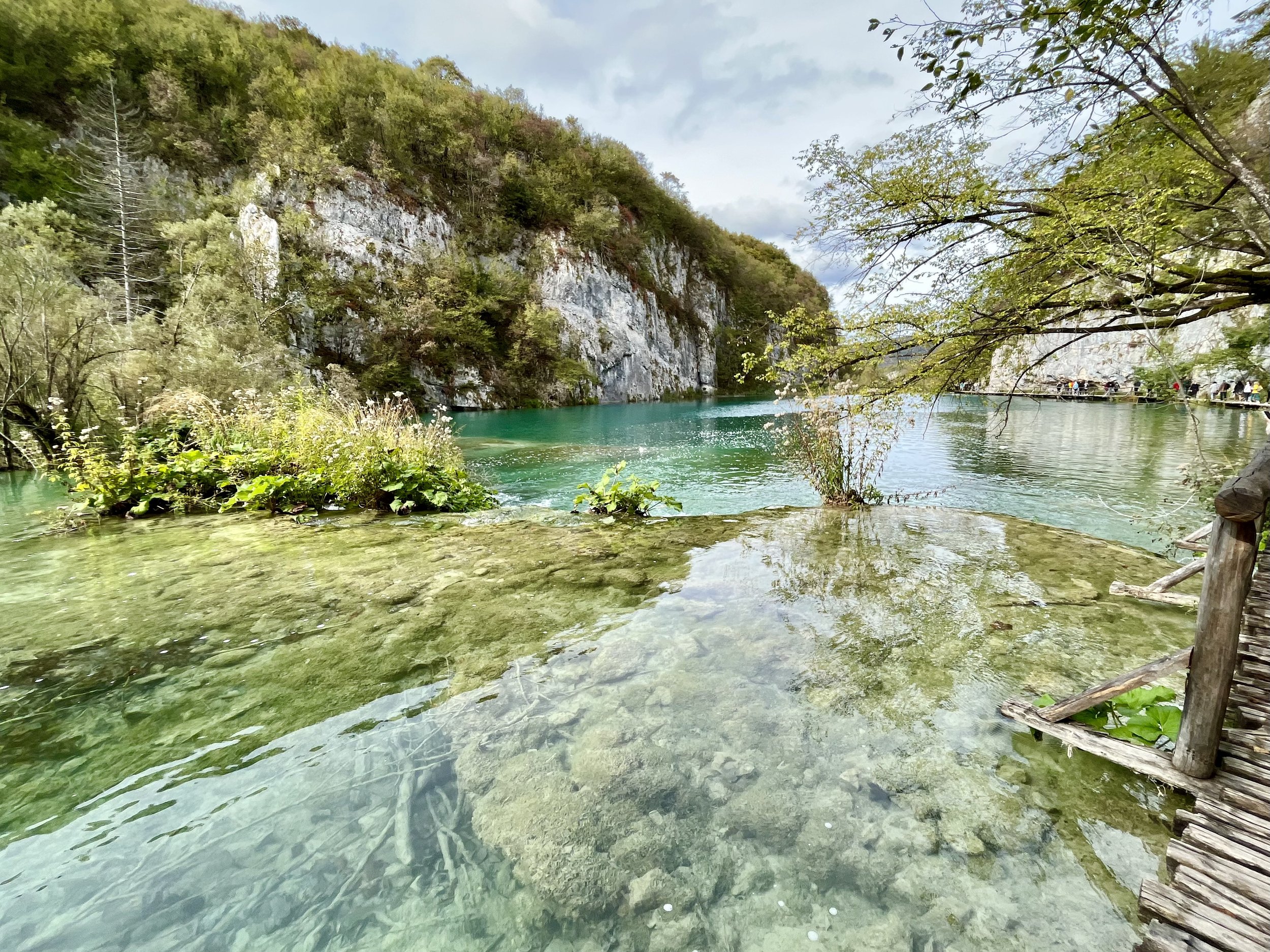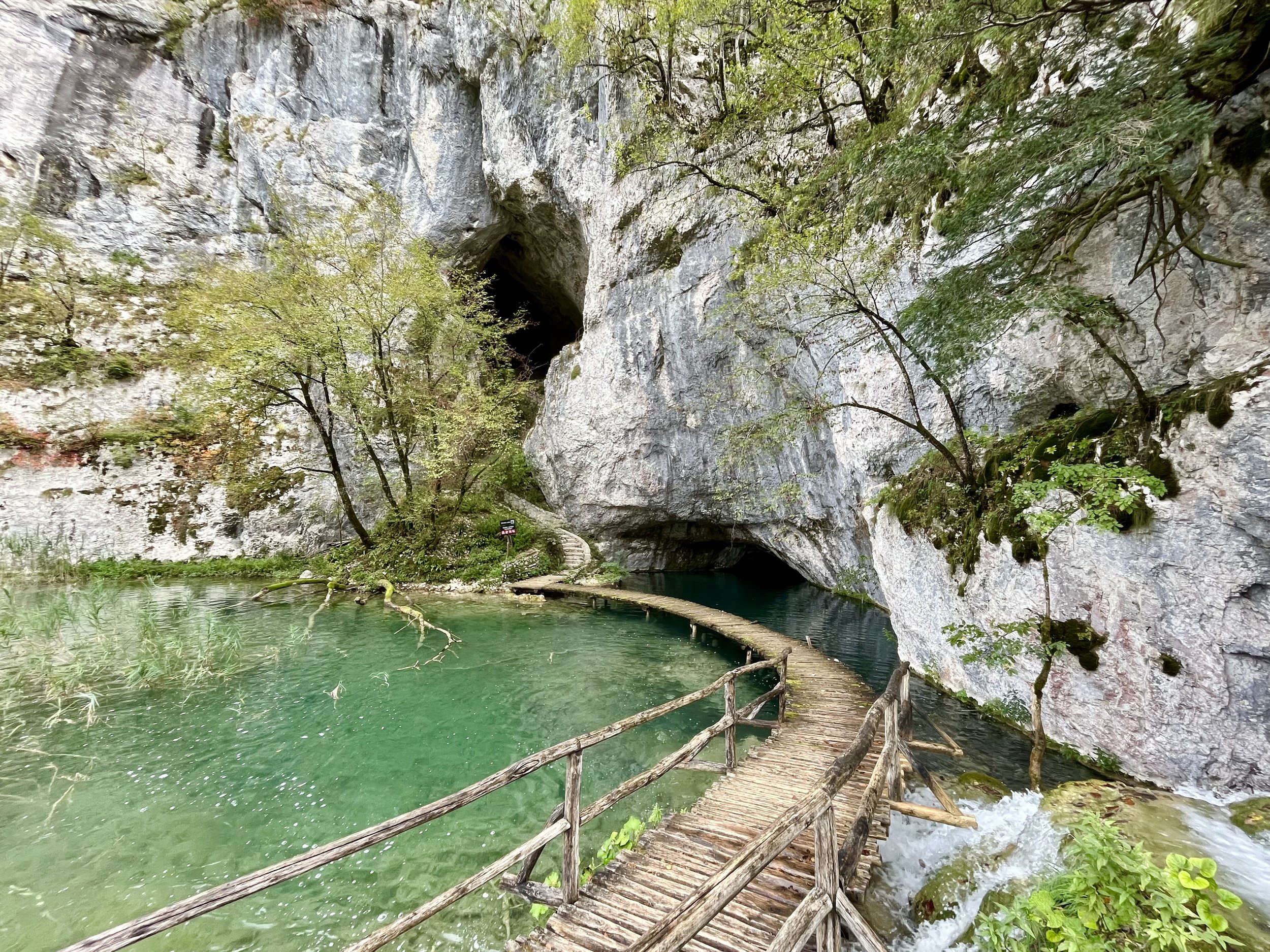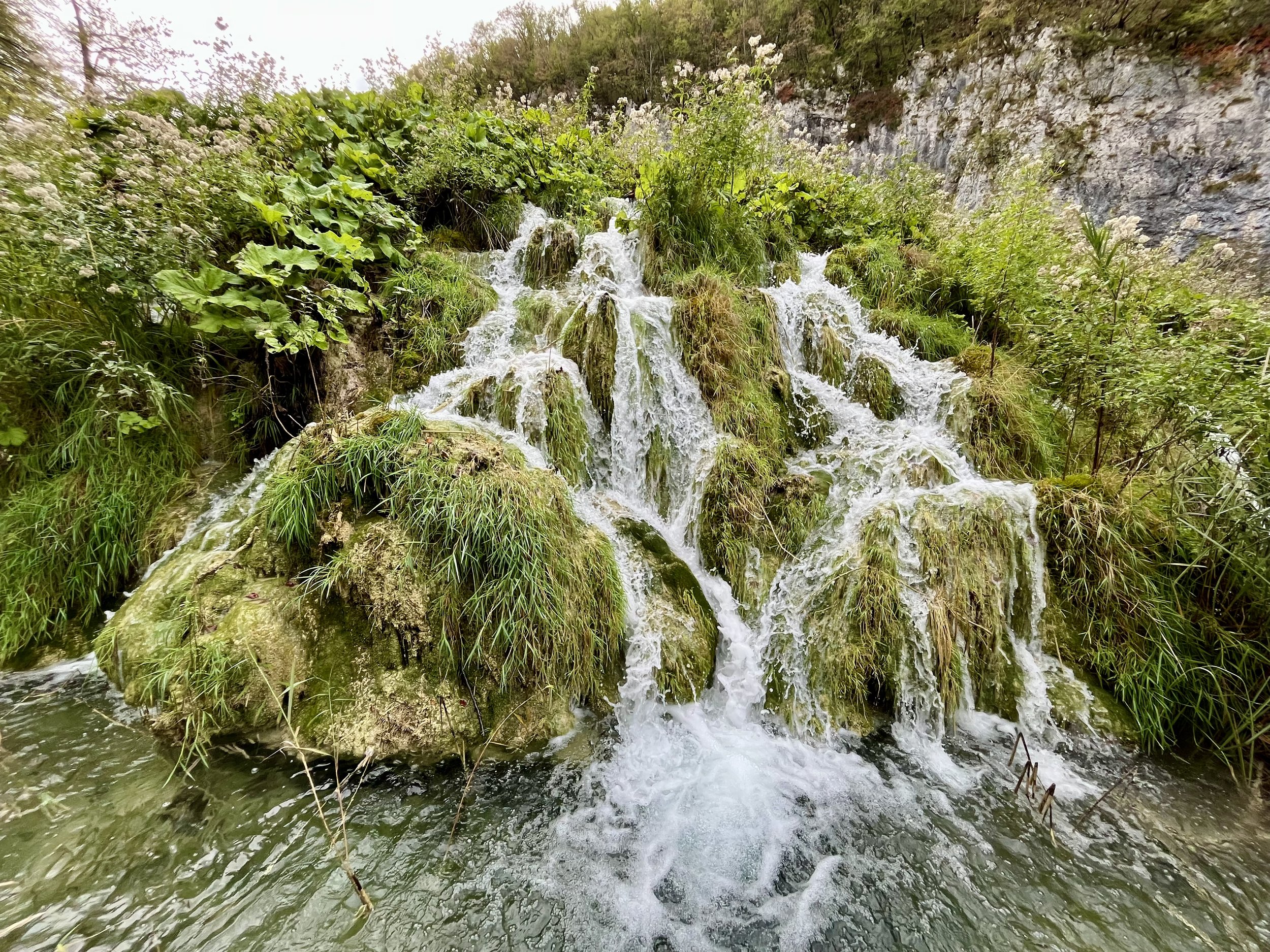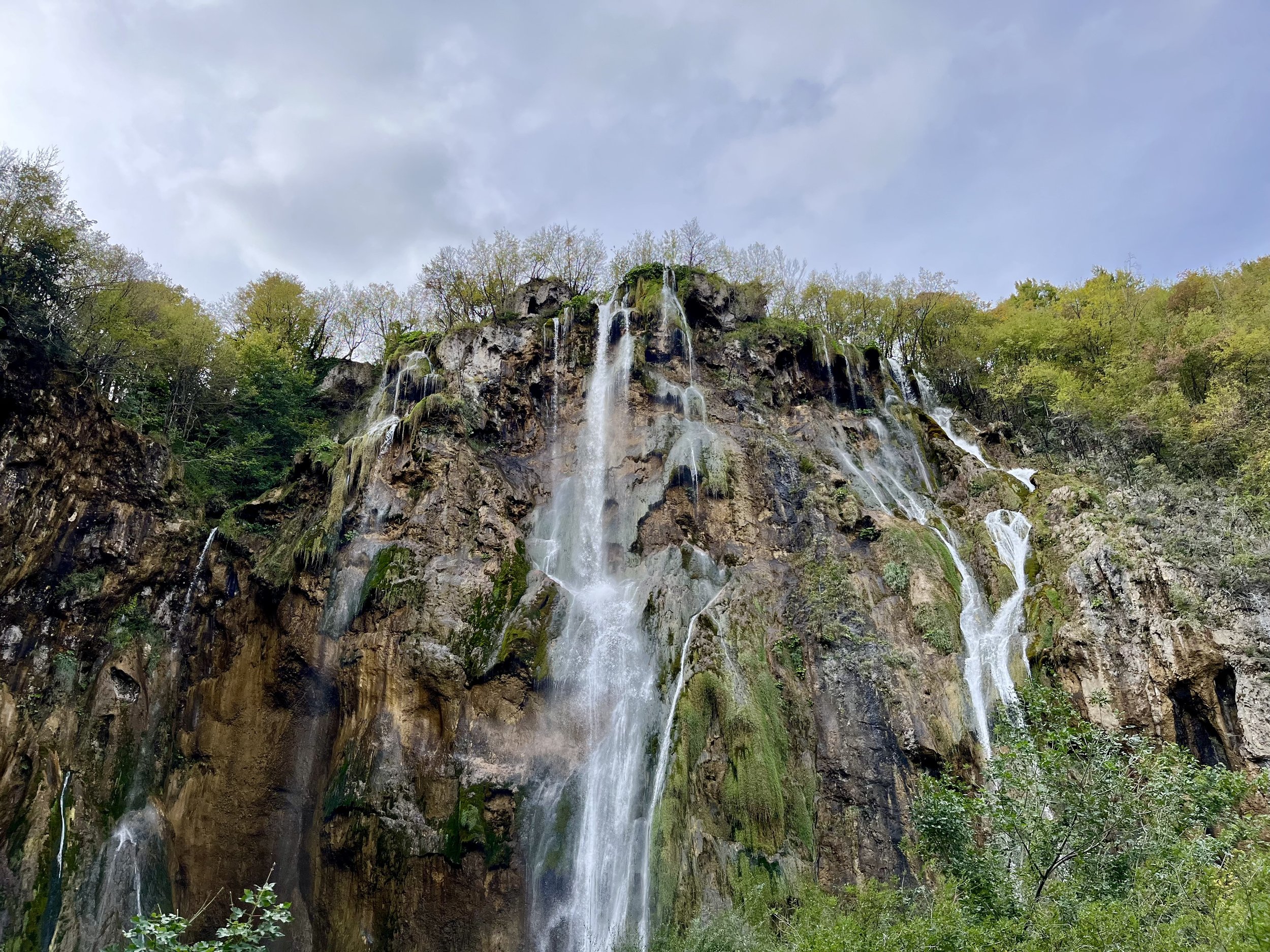Plitvice Lakes National Park
Plitvice Lakes National Park opened in 1949 and was the first national park in Croatia. While most people come to enjoy the falls, that is only a small fraction of the park’s 300 square kilometer size which also makes it the largest national park in the country to date.
It’s a good idea to check the weather before going because a sunny day in Split might not be the same in Plitvice. Even when we stopped at the rest stop half way there, we could definitely feel the weather getting cooler.
This was one of the longer day trips from Split. The commute was a three hour bus ride there and another three hours back. While the trip may sound lengthy, it was filled with many beautiful views which took us into the countryside, through small towns, and up into the mountains.
As we got closer to Plitvice, the landscape changed from rolling hills to rocky cliffs.
There are many trails to choose from and hikes can range from 2 hours to 8 hours. Our journey began at Entrance 2 which is the closer entrance to the upper falls.
This is Kozjak Lake, one of Plitvice’s largest and deepest lakes, and also the only one that has ferries crisscrossing its waters, taking people between the upper and lower falls. Kozjak was originally two lakes, but then the water levels rose. The tufa barrier between the lakes eventually got submerged and they became the single larger lake that we see today.
Our first glimpse at one of the upper falls. We were told that water levels were low at this time of year, but they were still pretty impressive.
The upper falls differ from the lower falls due to their taller, less interconnected nature. Each waterfall has its own sign post listing the name, height, and a small line drawing depicting the fall (you can see a bit of the sign for this waterfall in the bottom right corner).
These chestnut boards make a beautiful pathway over the water and are replaced every seven years (and can occasionally be closed due to flooding).
The water is so clear that in some places we could look down and see fish. There are 9 different species of fish that can be found in this park, but not all are indigenous.
It was here, under this random spot, where our guide decided to tell us the story of how vipers give birth to their young by going up into trees and releasing their young below. He then said it was viper hatching season, and took off down the path with an umbrella over his head. Luckily, we did not see any vipers!
There are 16 main lakes (12 upper ones and 4 lower ones) and many small unnamed lakes in the park. The smaller lakes are constantly being formed and re-formed by tufa barriers which change over time. There is even a lost lake that existed until 2018 and then dried up.
The unique lower waterfalls are created by tufa barriers which are porous rock formations created by the build up of calcium carbonate left behind by various small creatures, plants, and algae that live in these barriers and the naturally occurring high levels of calcium carbonate in the water.
The water colors of the upper and lower lakes differ due to the stone that surrounds them. The lower lakes are made of limestone. The upper lakes are carved out of dolomite.
A little side path leading to the view of a small underwater cave. There are many tufa caves and even a cave garden or two in the park, some of which are still undiscovered and unexplored.
The tufa barriers have been around in some form or another for an estimated 6,000-7,000 years, which places their beginnings right around the end of the last ice age.
The towering Veliki Slap (a.k.a. the Great Waterfall) is the tallest waterfall in Croatia at 78 meters.
Our last glimpse of the lower falls from the main viewpoint near Entrance One.

